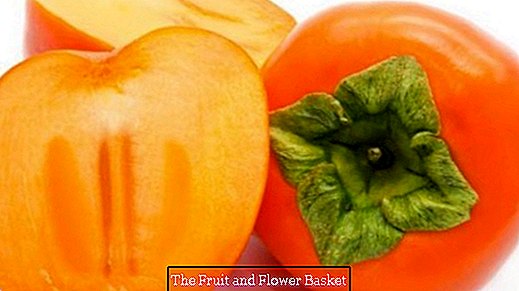The kaki (Sharon fruit) - exotic fruits
The kaki fruit has its roots in Asia. It is the fruit of the kaki tree, which belongs to the plant family of ebony plants. It reaches a height of up to fifteen meters and resembles in its growth type of the apple tree. The flowers of the kaki tree produce its aromatic fruits.
The Sharon fruit is a native of Israel breeding form of Kaki fruit. Their name derives from the same named valley of Israel - the Sharonebene - from. Gladly one speaks of her also as "refined"? Form of persimmon, since, although the fruits are similar in many ways, they have some differences or, we may say, preferences.
Benefits of Sharon fruit
In contrast to the persimmon, the Sharon fruit does not have nuclei. Also, tannins (tannic acid or bitter substances), which are responsible for a furry feeling in the mouth and have a contracting effect, are hardly or not at all contained in the Sharon fruit. For this reason, unlike the kaki, it can already be consumed in the immature state. Also unlike the kaki, the shell of the Sharonfrucht can be eaten. The Sharon fruit belongs botanically to the berries.
Externally, the two fruits are very similar and therefore difficult to distinguish. However, a distinguishing index is the size. The Sharon fruit is usually smaller than the Kaki.
growing countries
The fruits are grown in Israel, Asia and Australia as well as in Spain and Italy.
Ingredients and ingredients
The orange color of the fruits is due to their beta-carotene content. Beta-carotene is a precursor of vitamin A and is converted into the body in the same. In addition, both fruits are reliable vitamin B and C suppliers and contain the minerals phosphorus, potassium, calcium and iron. Due to their high glucose content, they are a true energizer and therefore good for cold and flu!
storage
The storage of both fruits depends on their maturity. So ripe fruits should be stored in the refrigerator and consumed within a few days. Unripe fruits can ripen very well at room temperature.
consumption
The persimmon should not be eaten until it is ripe due to its many tannins. When the fruit is ripe, you can tell by the color of its shell. If the shell is red to deep orange and the fruit is soft, then the persimmon has reached its correct degree of ripeness. If it is overripe, the shell shimmers slightly glassy. The kaki fruit has a thick, leathery shell. It is therefore advisable to remove the flower bud and spoon out the fruit.
The Sharon fruit can already be consumed in the immature state. If the fruit is immature, it can be eaten like an apple. When the fruit is ripe and soft, remove the flower bud and cut the fruit into pieces.
Wash the fruits well before eating!
For dessert, the fruit goes well with a fruit salad or a quark dish. But the further processing to ice or sherbet is a hit.
A real eye-catcher is filling the fruits with ice cream or cream and raspberries.
The combination Kaki / Sharon fruit and Parma ham is a successful starter variant.
taste
The taste of the fruits varies and depends on the degree of ripeness. Kakis are more reminiscent of the taste of peaches, apricots or sweet melons. The Sharon fruit, however, is a bit milder in taste and resembles a pear or a quince.
Our conclusion: Not only with the next cold should the delicious fruits end up in the shopping cart.





